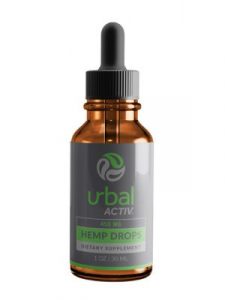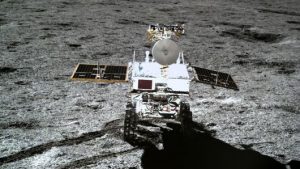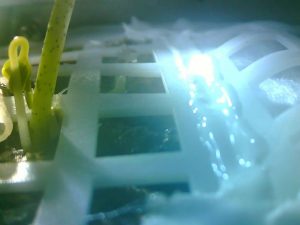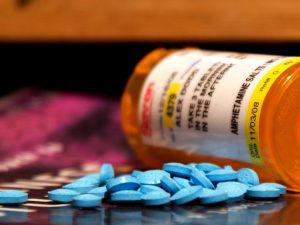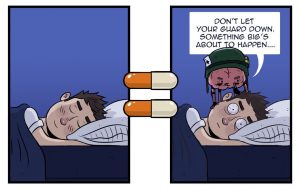We are all familiar with plastics because we use plastic every day. However, have you ever thought about where the plastic will go after you dump the plastic? Since the plastic is made out of polymers, which is hard to break down, most of them will stay on the earth for hundreds of years. The more severe problem with plastic pollution lies not in plastics, but microplastics.

Microplastic is a kind of small peice of plastic. (Source: https://mitte.co/2018/03/20/microplastics-threat/)
What is microplastic? Scientist defined plastics whose size is 5 mm to 10 nanometres as microplastic. There is two sources of microplastic; first, primary microplastic man-made microplastics for economic purposes such as cosmetic products, cleaning products and fibre from clothes. Another is secondary microplastic, which is the large piece plastics will be broken into small parts or been degraded to particles by the ultraviolet (UV) rays.
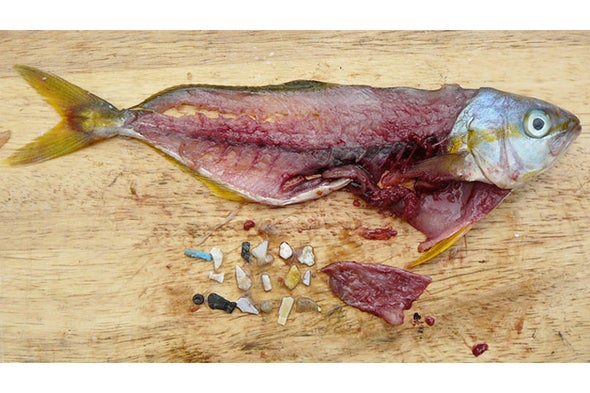
Fish can consume microplastic as prey. (Source: https://www.scientificamerican.com/article/from-fish-to-humans-a-microplastic-invasion-may-be-taking-a-toll/)
The size of the plastic would not entangle or chunk animals, but instead, they can be consumed as food and enter the animal’s body because of microplastic looks like eggs and small plankton. Although plastic do not contain some acute toxic components which can kill marine organisms immediately, the attracting properties of plastics will accumulate the toxic chemicals on the surface of the plastic and the toxic chemical additives inside may leaching out.

Human consumes plastic through commercial fish. (Source: https://plastictides.wordpress.com/2014/07/08/microplastic-ingestion/)
The toxic will accumulate through the food chain, as long as small organisms like micro-organism and algae consumed the microplastics. Since the microplastics can transfer to everywhere, it has been found inside of some commercial fishes. Finally, sea food will be intake by human. Therefore, people exposed to the threat as well.
Therefore how to solve the problem? The technology today is insufficient to recycle the microplastics in the ocean, but we can stop the source from damaging our environment more. First of all, educate people to place their garbage well, and prevent visitors to dump waste into the ocean. Secondly, it is essential for the government to publish regulations and rules to avoid artificial microplastic. Also, in the future, we can develop new technologies for detecting and collecting the microplastics from the polluted area. Finally, we should use as less plastic as we can in daily life.
To learn more about the threats from the microplastic, watch the folowing vidio:
by National Geographic











